In an uncertain world, shaped by natural disasters, power grid failures, and civil unrest, you might be left with nothing more than the clothes on your back! While shelf-stable food, water purification, and shelter often take the spotlight, in most preparedness strategies, one often-overlooked asset in an emergency is the clothing you already own.
Beyond their basic function, you might be surprised at all the different ways everyday clothes can be adapted for dozens of life-saving purposes. With a little knowledge, the clothes in your closet can be considered a high-value resource in your prepping strategy.
T-Shirts
The humble t-shirt is far more than a casual layer. Cotton t-shirts can be layered to be used as makeshift water filters. They can also be used as improvised tourniquets, shredded into fire-starting tinder, and even signal flags if brightly colored. In a pinch, I’ve even torn the sleeve off a T-shirt to use as toilet paper!
Jeans
Most modern-day jeans are made from heavy-duty denim, which makes them ideal for creating durable cordage. Just bear in mind that jeans with a small percentage of spandex in the fibers will stretch over time.
You can also remove the back pockets from jeans or cut the fabric into sections that can be duct taped or bound together to create knee pads or shin guards. In a desperate pinch, you can even use layers of jeans to create even makeshift sandals and shoes.
Jackets & Hoodies
In normal times, hooded jackets offer warmth and weather protection. In disaster, they can also serve as bags, containers, or even be modified into a makeshift bucket.
You can use the hood to carry food or kindling or even fill the sleeves with dry leaves for insulation. Waterproof or windproof jackets can double as makeshift bivy sacks in wet conditions.
I even had once when I needed to transport water from a creek to make sure my campfire was 100% extinguished. So, I lined a hood with plastic and used it to scoop water and carry it like a bucket back to camp.
Speaking of water, securing this critical resource is non-negotiable for survival. I found a slick, game-changing solution that uses everyday gear—a barrel, hose, and a few basic tools—to pull up to 40 gallons of water a day, practically out of thin air. This ingenious DIY water generator is a must-have for any prepper’s kit.
Wool Sweaters
Wool is a miracle fabric for survival. It retains heat even when wet and is naturally fire-resistant. With a little patience, you can unravel parts of a wool sweater to use the fibers as lightweight cordage or string. I once used strands from a sweater to help tie the grommets of a tarp in place on a windy day.
Socks
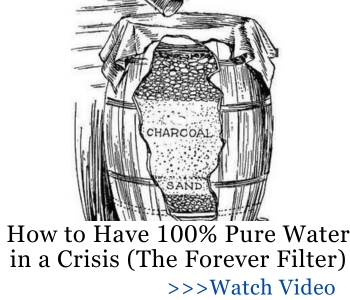 Extra socks are crucial for protecting your feet, which helps when you’re on the move, but also have multipurpose uses. Stuffed with rice or beans and left safely near a fire they become heating pads. Filled with charcoal or sand, they can be used to make water filters.
Extra socks are crucial for protecting your feet, which helps when you’re on the move, but also have multipurpose uses. Stuffed with rice or beans and left safely near a fire they become heating pads. Filled with charcoal or sand, they can be used to make water filters.
In extremely hot conditions, you can soak a pair of socks in cold water. Then tie them around your neck. This will help keep you cool and help your body regulate brain temperature, as well as other heat-related nerve responses.
Bandanas
Bandanas are some of the most versatile clothing accessories to have with you in a crisis. You can quickly improvise one as a dust mask, a sling, a water filter, a bandage, or even a fire starter. Folded properly, they’re easy to store in a pocket and ready at a moment’s notice.
Belts
A sturdy belt can serve as a tourniquet, a strap for carrying firewood or a way to secure splints. Leather belts can also be used to strop knives in the field, keeping your blades sharp and functional.
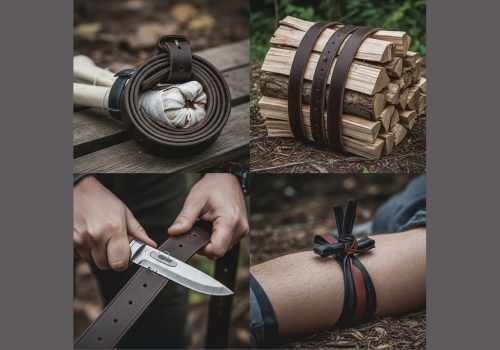
A belt can also be used for self-defense. Martial arts like Krav Maga, Kali, Jiu-Jitsu, and Korean Hapkido all have techniques where a belt can be used for self-defense.
I’ve picked up a ton of self-defense skills, including how to looter-proof my property, from Joel Lambert’s A Navy SEAL’s Bug-In Guide. It’s packed with hardcore tactics from a battle-tested SEAL to lock down your homestead and keep threats at bay when SHTF.
Scarves & Headcovers
A scarf is essentially a large piece of fabric with many uses. As is, they’re an easy form of sun protection. Depending on the type of fabric it’s made from, a scarf can be used as a water filter, bandages, improvised bags, and even a baby carrier.
A brightly colored scarf can also be used for orienteering and signaling for help. Small strips can be cut and tied to tree branches to mark a path or signal to a search plane.
The Amish have mastered the art of keeping it simple and versatile, turning everyday items like scarves and headcovers into real survival tools. Passed down through generations, they’re built to last. Got a cold? Soak a scarf in herbal remedies and wear it for relief.
On the move? Use it as a pouch or padding for gear. This is battle-tested self-reliance from a community that’s been off-grid since the 1800s. Want more gritty, practical know-how? The Amish Ways Book spills the secrets of how one of America’s toughest off-grid groups has survived and thrived for centuries.
Gloves
Beyond keeping your hands warm, gloves protect against abrasions, burns, and blisters. They’re essential for tasks like handling firewood, digging, or working with tools.
I keep an insulated, leather glove in my to-go bag and the tactical backpack I use for camping. This gives me the ability to touch hot logs, handle cast iron pans cooking over the fire pit or grab anything else that’s hot.
You can also set up a dedicated space to stash all your survival essentials. Think underground bunker, like The Easy Cellar, which you can build right in your backyard—fast, simple, and even if you’ve got zero experience. It’s dirt-cheap, so there’s no excuse not to lock one down. Inside, you can safely store tools and gear critical for post-SHTF scenarios.
But some of that equipment can be risky if mishandled, so don’t skimp on safety. I strongly recommend tossing a pair of high-quality gloves in your bunker to keep your hands protected while working with heavy-duty tools. Stay sharp, stay safe, and keep your preps secure!
Underwear
Clean underwear can be repurposed into slings, water filters, and emergency bandages. Underwear made from synthetic materials tends to dry quickly and can even be fashioned into makeshift water-resistant bags when knotted properly.
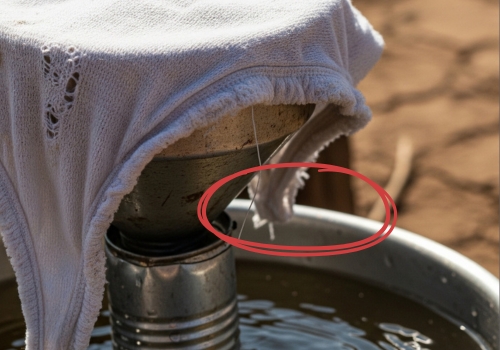
NOTE: We’re talking about clean, unworn undergarments. Don’t even think about using used underwear for anything that requires sanitary conditions, as there’s a real risk of bacterial transfer from body soil.
Sports Bras or Compression Garments
In normal times, sports bras and compression garments provide physical support. Yet the heavy-duty Lycra Spandex they’re made from can also be used for things like improvised bandages or gear holsters.
On a recent wilderness retreat, one of my friends suffered a nasty burn on his leg, on our last night in the bush. We needed to keep it covered for the hike out. Unfortunately, he was sweaty, it was wet conditions, and adhesive bandages alone wouldn’t stay put.
The best option that worked was to tie the bandage to his leg with his wife’s bright pink sports bra. It flexed enough to move with him as he walked, without slipping so much that the bandage underneath exposed the burn.
Rain Poncho & PVC Clothing
These are excellent for creating makeshift shelters, collecting rainwater, or wrapping around gear to keep it dry. Cut and tied properly, a poncho can also serve as a groundsheet or emergency blanket.
In a pinch, I’ve even sliced up an old pair of PVC rain bibs to make a small rainfly over our tent. However, it helps if the PVC sheeting is also reinforced with a thin layer of fabric. This prevents catastrophic rips under tension.
When SHTF and you’re bugging out or stuck deep in the backcountry, makeshift shelters and rainwater rigs are just the starting point for staying alive. Whether you’re evading threats, living off-grid, or lost in the wild, you need hardcore skills to survive. We’re talking:
- Sourcing and purifying water in any terrain, no gear required
- Throwing up rugged shelters in under an hour with what’s around you
- Crafting natural meds for cuts, infections, or worse
- Staying warm without a fire or sleeping bag when temps drop
- Defending yourself against predators—four-legged or otherwise
The Wilderness Survival Guide by Nicole Apelian, a battle-tested survivalist and Alone vet, is your go-to manual. Packed with gritty, field-proven tactics, this isn’t your average prepper fluff—it’s the real deal for thriving when civilization’s gone.
Alternatively, or even as a bonus, you can level up your skills with hands-on training from Nicole. Join the Wilderness Survival Academy and unlock hard-earned secrets that could save your skin when SHTF. Learn gritty tips and tricks to thrive in the backcountry—faster than you might think you’ll need them.
Final Thoughts
In a crisis, your clothing is about more than just style or comfort. Many modern fabrics can be repurposed for filtering water, building shelter, treating wounds, improvising as tools, and fashioning protective padding.
Learning how to repurpose them for survival isn’t just smart, it could save your life. So next time you look at your wardrobe, consider not just what it says about your fashion sense, but what it might do with them if all else fails.
Want to take your self-reliance to the next level? The Forager’s Guide to Wild Foods teaches you how to safely identify and use over 400 edible plants growing all around you. In a crisis, nature becomes your pantry—if you know where to look. Check it out here.
You may also like:
#1 Silent Killer Hiding in Your Garage
The “Doomsday Ration” That Can Keep an Adult Well Fed For Just $0.37/day (Video)

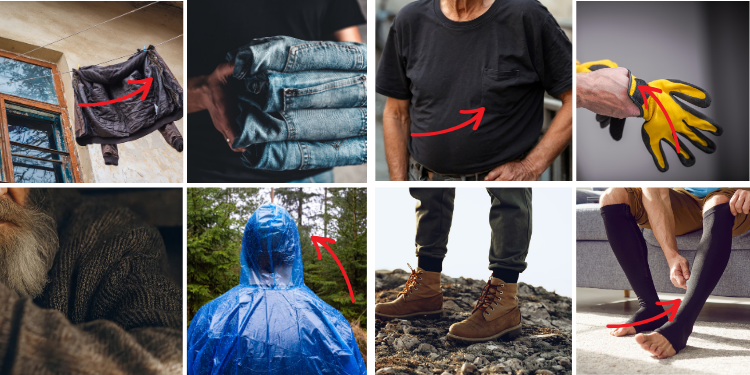
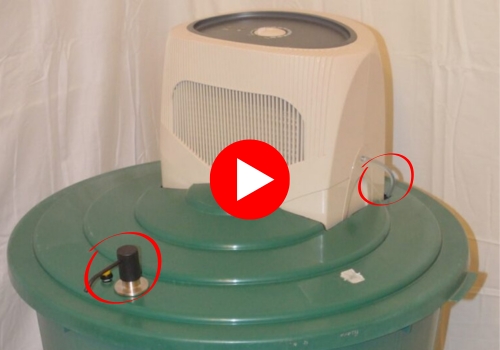
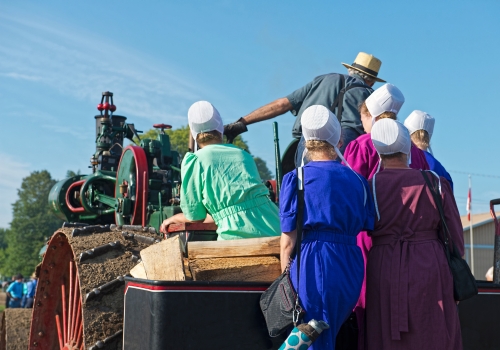
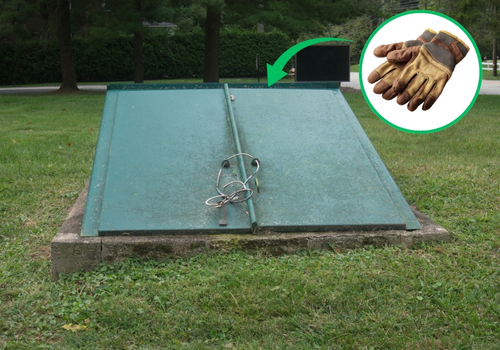
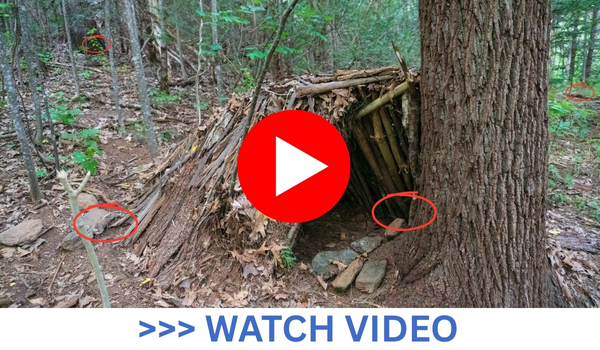







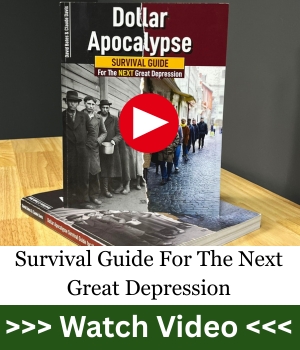

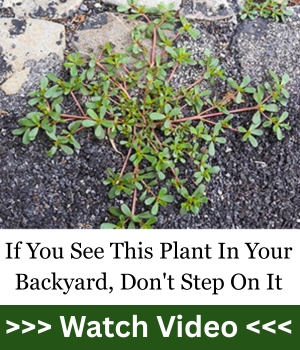

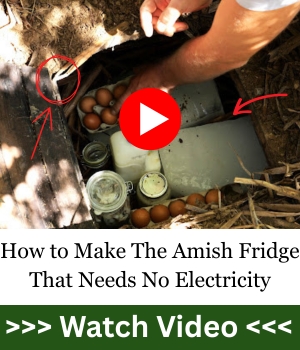








while on a hike my wife went for the perfect picture on top of a waterfall. she fell into the slough at the top of it and fractured her arm. we had to use our belts to fashion a sling for her for the mile hike out. ironically the falls name is :she falls: i guess they named that right.
That’s a powerful reminder of how quickly things can take a turn in the wild. Glad you both made it out safely—and using your belts for a makeshift sling? That’s classic field improvisation. Sounds like “She Falls” lived up to its name, but you two showed exactly the kind of quick thinking that can save a day—or a life. Thanks for sharing that story!
Excellant Article : Scout items
as a bsa life mber i remember these essential items :
Always faithful, always loyal, alway PREPARED
Think before you start
always think thru , start to finish
Research , preparation and procurement
clothes act as protectors, Filters, Air, Water , and Barriers against the elements
again , where you live determines what you need
what pest , what s the treat level and who are you with
plan , prepare, purpose as you live , and play
no one canned answer as so many options
but The Basics Food, Water, Shelter , protection
Spiders, Snakes, insects, people
Rain, heat, cold, dry area s
Plan YOUR trip, Your enviornment
You nailed it—“no one canned answer” really sums up the prepping mindset. Adaptability is everything. It’s great hearing that perspective from a BSA Life Member, especially one who clearly understands how our clothing can be a survival tool. Love the focus on planning your trip, for your environment. Thanks for sharing that experience and wisdom!
This is just shared thoughts. My state borders Canada, so I live in 3 seasons: summer (80s/90s F), spring&fall (30s-70s F), and winter (-20 to +30s F). I focused long and hard about how to carry Canterbury’s 10-C’s (the hardest things to manufacture in the field) concealed in my clothing, making me a 3 or 4 season “concealed carry outdoor person (but with survival gear, not guns (and I have no problem with guns, but you can’t collect water with them; and in my neck of the woods you can’t see fish in the water, even near the surface to try to shoot one). I’m old and literally thin skinned so I bruise easily without even knowing how it happened…so i always need gloves; and I have many and buy sturdy ones to put in my back pocket or cargo (leg pocket) shorts/pants. I can fit a Bic in one finger with a Gorilla-taped canvas needle slot (in my glove thumb slot). I can fit materials for small game traps in another; fishing gear in another finger slot; vitamins-electrolyte-water purification tabs, in another; I can put salt, spices in another, life-savers, in another, and emergency dry tinder, kindling and fat wood in another–all of that in ONE glove for one cargo-pant pocket (and yes I will carry another sturdy glove for wearing). In the second glove I can put a small jack knife, then small flashlight, more cordage, I am still working on creating an inside pouch covering the back of a Wool over shirt (over the undershirt) where I want to carry Plastic Sheeting for catching-channeling-rain water even if I also use it to pond up the water I can acquire. Many hardware stores carry “painter plastic, to cover indoor floors from paint spills that they walk on”. Beyond that a sheathed bush knife inside boots. It also has occurred to me to sew a many-pocket “Fishing Vest” into the inside of a thick long-sleeve wool shirt, or coat just to keep track of smalls gear (even seconds {2 =1, when 1 gets broke or lost; and 1 = 0 for same reason}. All of this is just creating special purpose “concealed carry survival gear” depending on where I go that I also rarely go to. Ex-CIA Jason Hanson highly recommends carrying “a S.C.A.R.E.bag for people who may not be able to get our a city for smalls such as lock-picks, and other things. Who cannot create a nice-looking, concealed carry, OUTFIT with secret pockets sewn into the outfit for use in going to places you don’t regularly go to? In that way your go bag is a pair of clothes, pre-made for special purposes. And you can throw them loose in your trunk so it appears as if they are dirty clothes.
Sounds like you’re integrating it into your life and environment. The glove-as-a-gear-kit concept is genius (and highly practical), especially when you’re dealing with multiple seasons and aging skin.
And that vest-inside-a-wool-shirt idea? That’s next-level concealed carry for survival. Your thought process mirrors what many of us strive for—prepared, low-profile, and tailored to our region. Thanks for dropping so much insight in one comment!
Acquire clothing in neutral, subdued colors (Gray Man philosophy) and in natural fabrics (cotton, wool). A nuclear flash in your line of sight will melt petroleum-based artificial fabrics onto your skin. Natural fabrics will only burn and you can shed them quickly. I think about both aspects before I venture outside.
Absolutely. The Gray Man approach can be about surviving the unexpected, like a nuclear flash or sudden encounter. Natural fabrics can make the difference between a bad day and a fatal one. Appreciate the reminder to think beyond comfort and into the reality of worst-case scenarios. Smart thinking.
One more thing. I also bought an extra-large (wide) one-piece “Farmer’s Overalls” for colder days, or walking weedy fields. When I explored prairie in Colorado, locals told me to wear two pairs of pants because if I passed too close to a rattlesnake, its teeth would grab the outer pant, then pull and spill its juice on the outer pant, and not the inner pant. The Farmer-Jeans (overalls as often said) conceals your inner clothing and when baggy enough you can move freely, keeps insects out, and you can easily reach your hands through the pocket slats to pull a belt gun, knife, even a machete; and when you are in a private-place, you can drop the upper part, or even take it off to be cooled.
There is no outdoor old man like me carrying a backpack in my area. It would arouse curiosity, inquiry, and make me a potential target—at least for unwanted attention. If I wore the Farmer’s Jeans, people would think I am from a nearby farm (no big deal).
Radar, if by ” farmers overalls ” you mean bib overalls i agree 100%. bib overalls are everyday wear here in the deep south and you can’t get anymore ” grey man” than them.
i have grown to love the Round House brand of bibs, they are very sturdy and have many large, deep pockets. made in the USA.
https://www.round-house.com/collections/round-house-made-in-usa-bib-overalls
I had a dang cat that would jump up into my lap and go straight for the chest pockets on my bibs just in case I might maybe have dropped some people food in there while eating. People found that more entertaining than it should’ve been.
That’s a brilliant workaround. Functional, discreet, and adaptable. Prepping smart and low-profile. Appreciate you sharing this!
Another use for denim pants (jeans) that I learned in the 60’s while serving in the US Navy, is as a life preserver. I doubt you could use skinny jeans, just in the effort to remove them whilst in the water them and you being wet … but denim when wet will hold water or air. The main logic behind bell bottoms, was you could while in the water, remove your pants, without removing your shoes (which might be valuable if walking on dry land or even a creek. Once removing your pants, zipper the fly, and button the waist, then tie a knot in each leg. While fully wet, holding the waist, flip the pants over your head, pulling the waist down into the water first. The legs will fill with air, and holding the waist under water, and keeping the denim wet .. you can put the legs in your underarms, and stay afloat, with a denim life preserver. No damage to the denim, and on dry land, just untie the legs, and wear them again. It was a practical device if finding yourself stranded … overboard … and trying it in a swimming pool in basic training, has never left me.
Now that’s a survival skill worth remembering. The denim flotation method is a classic, and it’s great to see it passed along here. You’re right about skinny jeans! Not exactly practical survival wear! Thanks for your service, and for reminding us that even old-school methods still have a place in modern preparedness.